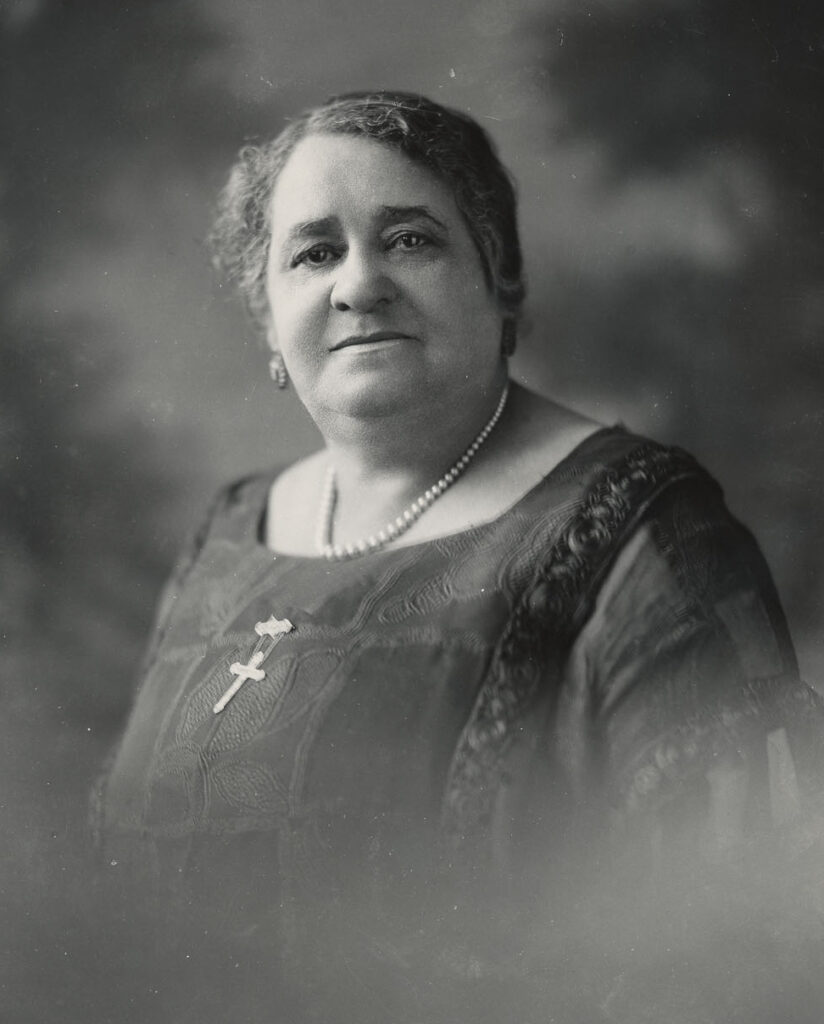
Maggie Lena Walker
Banker and Community Leader in Jackson Ward, the First Black Wall
Street

In the early 1900s, and after being disenfranchised by Virginia’s new constitution, Black citizens of Richmond Virginia, with little political power, created a bustling business district in the Jackson Ward section of Richmond. That area was the first to be called “Black Wall Street.”
Jackson Ward was home to several thriving Black-owned businesses including St. Luke Penny Saving Bank. The bank was established by Maggie Lena Walker, business woman, community leader, and the first Black woman to organize a bank and run it.
Maggie Lena Walker was born in Richmond, Virginia on July 15, 1864. While still in her teens she joined the local chapter of the Independent Order of St. Luke, a fraternal society that provided for the needs of Black Americans.
Walker played an active role in the organization and had a vision to take it to greater heights and strengthen the Black community by creating a conglomerate that included a bank, newspaper, and department store. Walker believed the Black community could become economically independent if they kept their money in the community, had a
place to shop for goods at an affordable price, and a newspaper to spread the good news of what the Order of St Luke was accomplishing.
In 1902 she started the St. Luke-Herald newspaper. A year later, in 1903, she
established the St. Luke Penny Savings Bank and served as its first president. In 1905she opened a department store called the St. Luke Emporium.
During the Great Depression, when banks around the country failed, Walker kept St. Luke Penny Savings alive with a merger with two other Richmond banks. The bank was renamed the Consolidated Bank and Trust Company. Walker served as chair of the board of directors.
Maggie Lena Walker became partially paralyzed later in life but never stopped working for her community. She died on December 15, 1934.
Her home in Richmond, Virginia was purchased by the National Park Service in 1979 and is now a National Historic Site.
This content is restricted to site members. If you are an existing user, please login. New users may register below.
